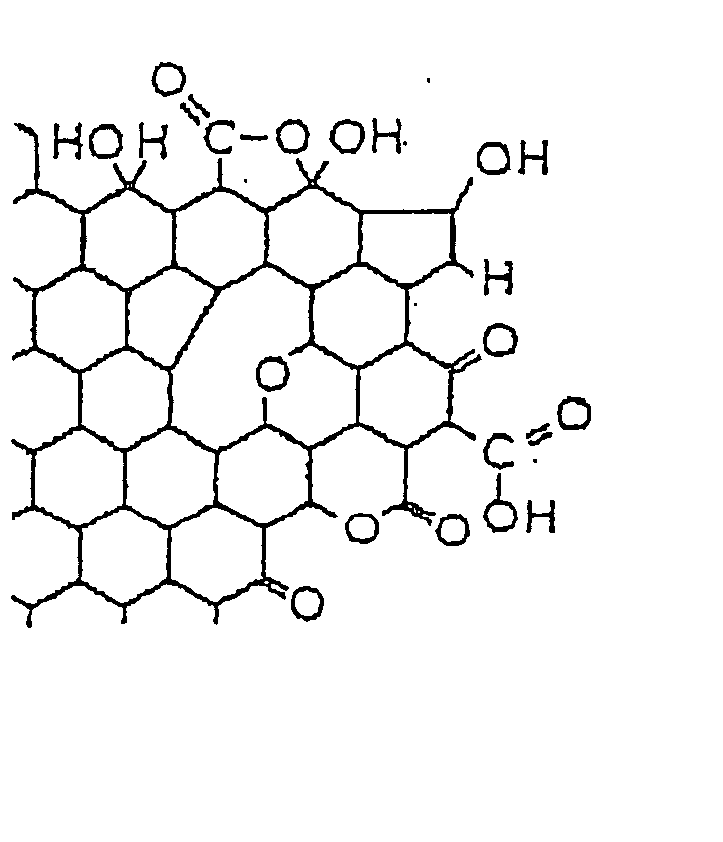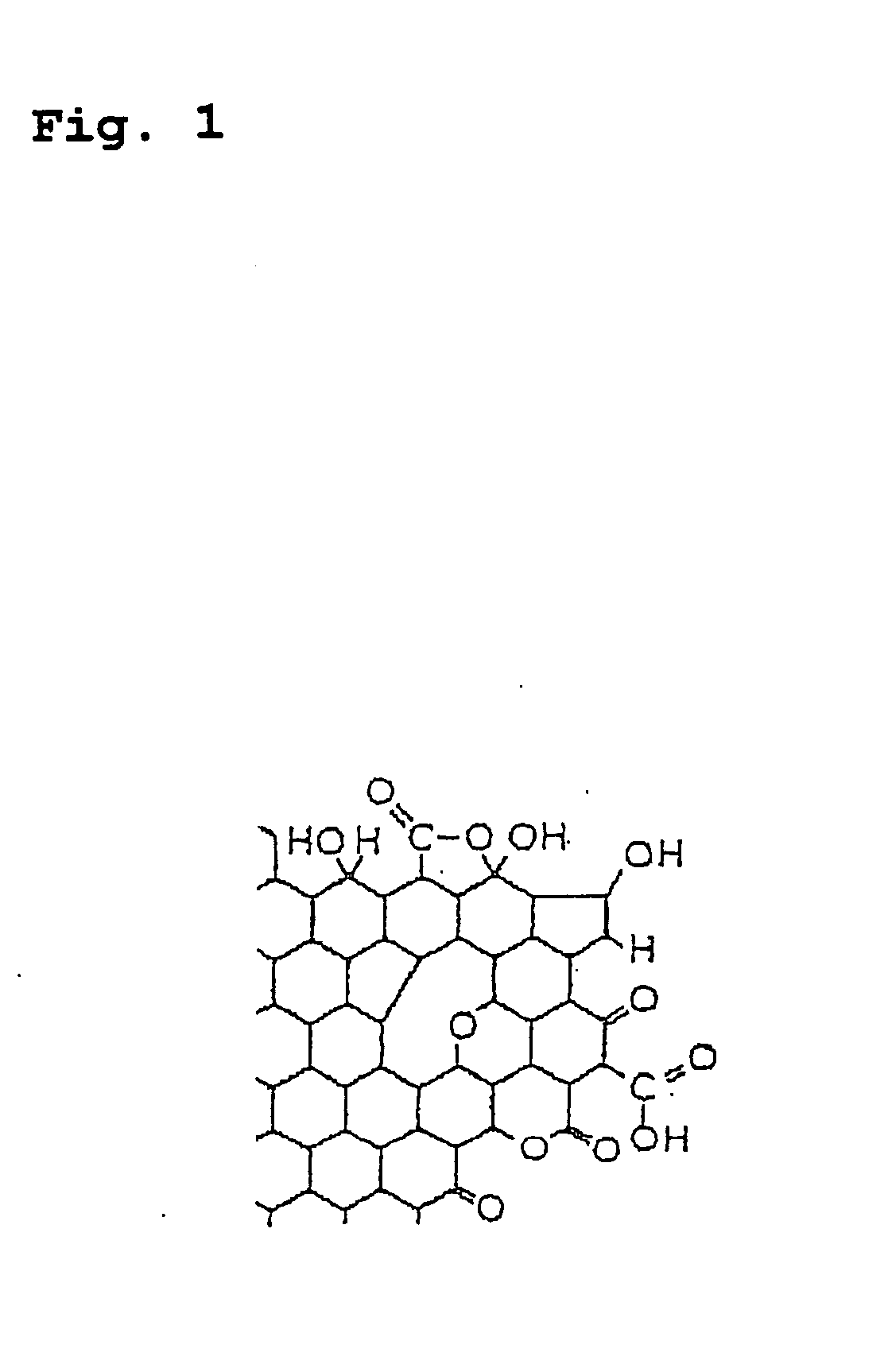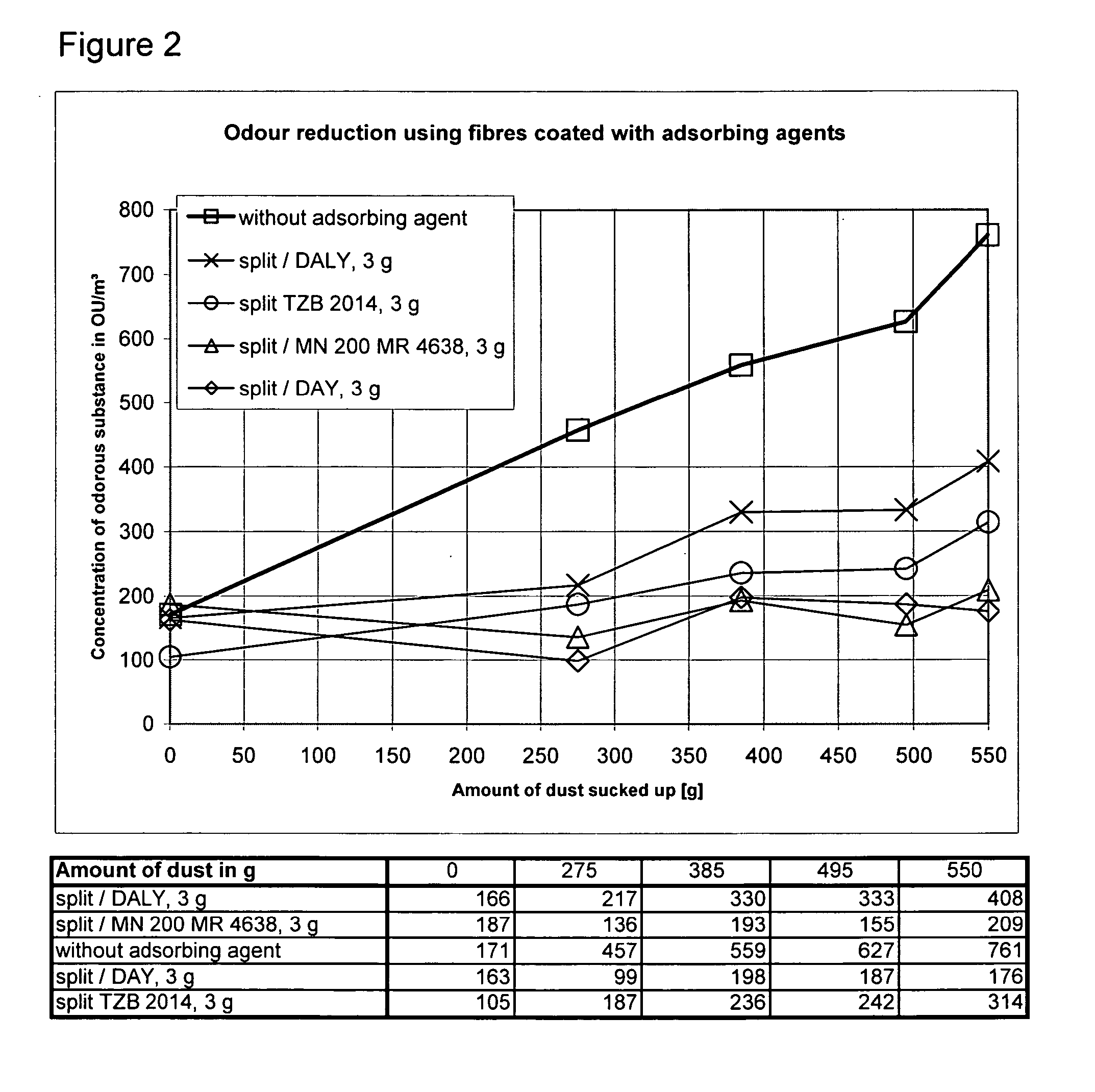[0008] The present invention relates to a novel adsorbing agent and a dust collection chamber with which an improved reduction of the odours of dust deposited in dust collection chambers is achieved and in which the adsorption material is used effectively.
[0009] According to the present invention the adsorbing agent comprise fibres, flakes and / or granulate as the supporting material to which a powdery adsorption material is applied. The applicant was able to demonstrate that when such an adsorbing agent is used e.g. in a dust collection chamber, only a fraction of the adsorption material has to be used by comparison with the prior art. With the adsorbing agent according to the present invention, simultaneously a significant reduction of odours from the dust deposited in dust collection chambers is achieved. This is obviously due to the fact that the adsorbing agent present in fibres and / or flakes, under the operating conditions e.g. of a dust-collecting filter, is whirled up in the dust-collecting filter and thus mixes homogenously with the dust.
[0033] Application in the sense of the present invention can be such that heated adsorption material is applied to the surfaces of the supporting material, so that melting occurs as a result of
heat transfer to the surface of the supporting material and the powdery particles adhere. On the other hand, the surface of the supporting material can also be softened and then the particles applied to its surface. In the case of bi-component fibres, it is possible for the outer layer to have a lower
melting point than the core, such that adherence of the particles is possible by heating said core.
[0034] Physically the application can take place by electrostatically charged supporting material being used. The procedure can take place with supporting material which is charged triboelectrically or by means of
corona charge. Preferably charged split fibres are used for example. It is also possible to achieve the adhesion of the adsorption material to the supporting material by mixing suitable fibres, flakes, granulates and / or beads and adsorption material, the supporting material and the adsorption particles being then oppositely charged by the
triboelectric effect. In this way an excellent electrostatic bond of the adsorbing agent particles to the supporting material is achieved without reducing the surface of the adsorbing agent particles by bonding agent. This possibility can be used particularly advantageously with the variant in which synthetic fibres are used with macroporous polymers. Thus for example the combination of
polypropylene fibres with SDVB (
styrene-
divinyl benzene)
powder exhibits a strong triboelectric charge on mixing. Surprisingly it has emerged that in the combination of a macroporous SDVB as the supporting material with an adsorption material based on macroporous SDVB functionalised with amine, a very defined
triboelectric effect occurs which leads to a particularly secure bonding of the adsorption material to the supporting material.
[0035] The adsorbing agent as described above can also be present in an air-permeable wrapper. The
advantage of this embodiment can be seen in the fact that the adsorbing agent is easy to
handle and, when it is used for example in a dust-collecting filter in a
vacuum cleaner, can be introduced into the dust-collecting filter without any problem. The wrapper for such an application is so constructed that it is destroyed again under the operating conditions such that the adsorbing agent can be whirled up in the dust-collecting filter and kept in circulation. Suitable materials for this purpose are non-wovens, e.g. non-woven with a low
grammage, e.g. meltblown at 5 gr / m2.
[0037] For
cyclone vacuum cleaners it is advantageous if porous polymers are used as the adsorption materials, since this causes no additional
pollution due to carbon abrasion or the proportion of undersized material, and
scratching of the generally transparent receptacles is avoided. According to the present invention, a refuse receptacle, e.g. a refuse bag, is also understood to be a “dust collection chamber”.
 Login to View More
Login to View More 


